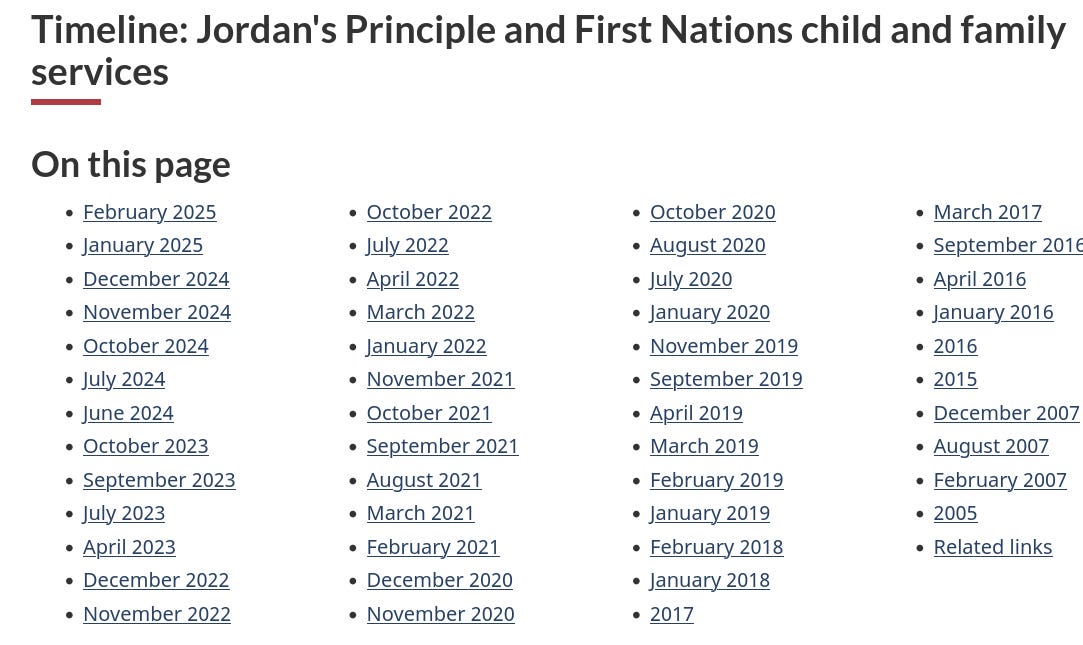Defanging Populism by Getting Stuff Done
Part three of seeing Canadian politics through the lens of ancient Chinese political theory
In my last post on this subject I introduced the idea that beyond the left-right lens that colours most voter’s understanding of politics, there also exists another—the one that I called “legalism versus cabinet rule”. I illustrated it with this graphic:
Because of the limited space I have to explain complex subjects like this, I stopped in the middle of explaining why I put well-known Canadian politicians in one place or another. So in this post I’m going to start off by finishing that explanation.
Why did I Put Pierre Poilievre Near Both Mark Carney and Lui Bang?
I believe the rhetoric we see from the populists infesting the modern political landscape comes from people like Poilievre and Trump latching onto the inarticulate, emotional anger felt by a fraction of the population who are suffering from the sclerotic inertia of our legalist states.
The rage against ‘wokeism’, ‘DEI’, gender equity, etc, seems to me to at least in part based on anger at the way legalism substitutes performance and process for actually getting stuff done. For example, consider the anger someone who has to work at several jobs just to pay their ridiculously high rent must feel watching a city Council meeting that starts with a land acknowledgement, involves some sort of statement of which pronouns people want to be addressed by—but refuses to loosen parking minimums, reduce set-backs, elimiinate exclusionary zoning, or extend height maximums in order to get rent and mortgages down to a place where they are more affordable.
When someone sees these two things together enough times they can become conditioned like Pavlov’s dog to associate government’s performative rituals around First Nations and LGBTQ rights with not being concerned about what’s happening with working-class Canadians. It doesn’t matter if the two issues have nothing to all to do with each other because if nothing else, it suggests elected officials are putting performative rituals around minority rights ahead of practical results that have a direct impact of the lives of all middle or lower income citizens. Nor does it matter that the Conservative and Republican party policies would do nothing at all to solve issues like the housing crisis. To the alienated, angry base of both parties when they listen to Poilievre say “Canada is broken”, it sounds like their concerns are finally being taken seriously after years of being ignored by the Liberals.

Much as I loathe Pierre Poilievre and Donald Trump, one thing they seem to have done is help elect a politician (Carney) who has actually put getting stuff done ahead of vibes (remember Trudeau’s ‘sunny ways’?) and aspirational projects that either take forever, balloon in price, and/or never seem to get done.
I suspect the fact that so much of the support for Poilievre seems to be melting away is because the new PM has articulated a path away from the Legalist state that makes a lot more sense than Poilievre’s disingenuous hand-waving and name-calling. Just because people are angry doesn’t mean they can’t tell a phony from the real McCoy. (Or, at least want to support someone who talks like a real McCoy versus an obvious phony—our creaky electoral system dramatically limits voter’s choices. Only time will tell how much Carney really does ‘walk the talk’.)
Please note an important point in the above graph. It looks to me that the decline doesn’t suggest most Conservative supporters have transferred their support to Mark Carney. Instead, they have just switched from “Poilivre” to “unsure”. This suggests they are thinking ‘we don’t particularly like the Conservative leader and the new PM’s policies seem to make a lot more sense than Milhouse’s do. More importantly, Carney does seem to ‘get’ what’s wrong with the country, so let’s give him some time to see if he’s the real deal’—but don’t forget he could be yet another phony baloney. (This idea is constantly in my mind too.)
The Danger and Promise of Pursuing a Politics of Results not Rhetoric
I’m fully aware that at this point a lot of readers will be feeling fear about giving too much power to the Cabinet. That’s because most folks with some sort affinity to ‘progressive’ causes will be thinking that we need protection against the greed and malfeasance of politicians who want to strip-mine everything in order to help make a small number business people super-rich.
If anyone doesn’t understand what I’m talking about, here’s that infamous clip of Ontario Premier Doug Ford promising developers that he’ll bulldoze the Green Belt land reserve that protects our water and food supply from sprawl if these big business types will just support his party in the next election.
I have a lot of sympathy for this point of view. Indeed, I was very concerned that if Pierre Poilievre ended-up Prime Minister he would move heaven-and-earth to use cabinet rule to follow policies that would accelerate climate change, integrate us even more into the US economy, privatize healthcare, eliminate the CBC, etc. The thing to remember though is the above video was released seven years ago and the RCMP still haven’t gotten off their asses and charged him with anything. So much for the protection that comes from legalism—.
And it’s not just that. Donald Trump and Stephen Harper have both showed that if an elected leader really wants to thumb his nose at the Supreme Court, there’s precious little the legal system can or will do to stop him. And even if there is a process to go through to protect the environment or First Nation’s interests, there’s always a way a determined government can either slow-walk the process so it take decades for anything to happen, or, it can just reduce the process to a meaningless box that gets checked.
If any reader wants to see an example of how governments can ‘slow walk’ the process in order to render a seemingly progressive policy meaningless, consider the ridiculous battle that has been taking place between the federal government and the Assembly of First Nations over child welfare payments between 2005 and 2025.

The true absurdity of this situation is manifested by the fact this ‘long march’ was actually started because the Canadian Human Rights Tribunal was upset about things like foot-dragging by the bureaucracy:
About Jordan's Principle
Jordan's Principle is a human rights principle established by the Canadian Human Rights Tribunal (CHRT) to make sure that First Nations children do not face gaps, delays, or denials in accessing government services because of their identity as First Nations children.
Jordan's Principle is named in memory of Jordan River Anderson. He was a young boy from Norway House Cree Nation in Manitoba.
(from a government of Canada website titled Jordan’s Principle.
You’d think that an unanimous vote by the federal Parliament might have pushed the process to go a little faster, but you’d be wrong—.
December 2007
On December 12, Private Member's Motion No. 296 in support of Jordan's Principle was passed with unanimous support in the House of Commons in honour of Jordan River Anderson. "The government should immediately adopt a child-first principle, based on Jordan's Principle, to resolve jurisdictional disputes involving the care of First Nations children."
I’m not suggesting that Parliament, the government of the day, the civil service, etc, are monsters who are consciously slow-walking the implementation of Jordan’s Principle. Instead, I assume that what’s happened is the process is so hemmed-in by legalism that it requires legions of lawyers and box-checkers to actually do anything. (Or, is so hemmed-in that it allows large legal firms the ability to manipulate the process to maximize rent-seeking. I’m not completely naive about people’s potential motives.) The result is a process that seems straight out of Charles Dickens’ exposé of the 19th century British Court of Chancery, Bleak House.
When legalists see this sort of delay happening, their immediate response often isn’t to ask ‘what’s wrong with out system that it takes so damn long to do anything?’, but rather to suggest that the process is under-funded and would work better if more money was spent on hiring more lawyers, consultants, or bureaucrats. Instead, I’d argue that the problem is the fact that there are so many lawyers, consultants, and bureaucrats involved in the first place. If the government of the day really does want to settle this issue, why couldn’t it have just come up with a financial solution that really does seem fair and simply done it? I’d suggest it isn’t malfeasance—or at least just malfeasance—instead I’d suggest it’s because Canada (and not just Canada—I think this problem exists in a great many places) is in the grips of an extremely dysfunctional governing philosophy, which the ancient Chinese would have called ‘fa’ and I have been calling ‘legalism’.
Getting Away From Legalism and into Something Better
All government activity exists in the form of a dialectic where new regulations intended to right some wrong mobilize people of ill-will to learn how to manipulate the process to push-back against the spirit of what was intended. (More support for the Confucian critique of Legalism.)
What this means to me is ultimately there really isn’t a substitute for raising the consciousness of ordinary people so they actually support a policy and will fight like Hell to see it is actually put in place. After all, it wasn’t the RCMP, provincial Ombuds, or the courts that saved the Ontario Greenbelt—it was the anger of ordinary voters. Rules and regulations are no substitute for an engaged, informed citizenry picking good people to run the country!
And this is the paradox of modern legalism. People support it because they think the complex web of rules and laws will tie the hands of elected officials enough to stop the ‘wrong people’ when they get into office. But the ‘wrong people’ aren’t being stopped by these rules and regulations simply because they either ignore them or they figure out ways of playing the system to their advantage. But when the ‘good people’ get into office, they tend to take all these rules very seriously—which means they find it almost impossible to do much of anything. As a result, problems just get kicked down the road, frustration grows, and voters become willing to vote for anyone—no matter how incompetent—who suggests they will blow up the bureaucracy and fire the ‘educated elites’ who constantly put roadblocks in the way of actually accomplishing anything.
In other words—legalism leads to populism. It doesn’t matter if you are talking about immigration, climate change, the housing crisis, Ukraine, Palestine, crypto, whatever. Any complex rules-based system that removes our ability to actually get things done is inevitably going to build support for any politician who promises to blow everything up. As a result, the answer to populists and fascists isn’t to write rules to lessen their ability to create chaos when they get elected. Instead, politicians of good will need to find ways to get things done while still preserving the spirit of important things like fair trials, science-based policy, respect for First Nations, protecting the environment—etc.
Insofar as the Liberal government of Mark Carney actually ‘pushes the needle’ in the right direction on this issue, I’m willing to continue to give him the benefit of the doubt. That’s why I have taken the position of supporting the legislation he’s tabled in Parliament even though most of my friends think that he’s just another right-wing fraud.


